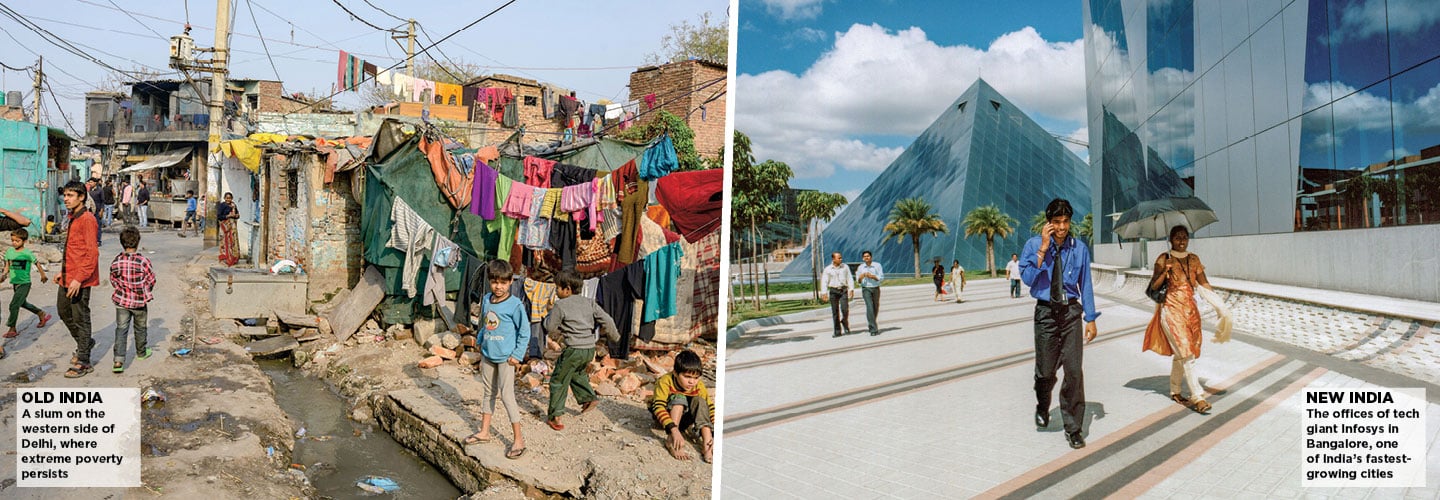Down an alleyway littered with trash is the two-room apartment where Sushmita, 14, lives with four other family members in Delhi, one of India’s largest cities (see map, below).
They’re part of the wave of Indians who’ve moved from villages to big cities in search of better lives. Yet Sushmita’s family struggles to make ends meet. Sometimes there’s no electricity. The apartment has one bed. Sushmita’s parents and sister sleep on the floor.
Twelve miles away on the eastern side of the city, Anirudh Joshi, also 14, lives in another world. His neighborhood is known for its parks. His family’s apartment boasts both an air conditioner and a flat-screen TV. Anirudh even has his own smartphone.

